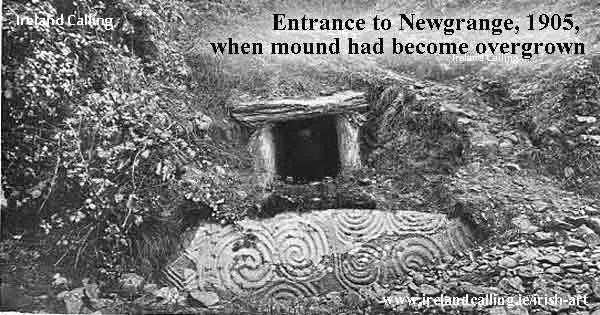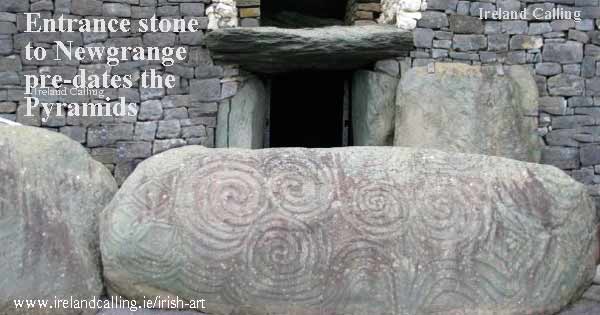Ireland is well known for its literature and music but possibly less for its art even though it has a long and rich artistic heritage.
When we think of ancient civilizations, our minds often wander to the grand structures of Egypt, the awe-inspiring pyramids that have stood the test of time for millennia. However, there is a lesser known treasure, a legacy of art and creativity that pre-dates even these ancient wonders.
Ireland, with its rich history and captivating landscapes, is home to a unique and ancient artistic tradition that dates back to a time long before the construction of the pyramids. The oldest surviving Irish Art dates back to the Neolithic Era 3200 BC, predating the Pyramids and Stonehenge!
The Dawn of Irish Art

It was during the Neolithic period (around 4500 – 2000 BCE) that Irish art first emerged. This era, known for its advanced stone-working techniques and monumental architecture, saw the construction of remarkable megalithic tombs such as Newgrange, Knowth, and Dowth.

These structures, some older than the Egyptian pyramids, bear intricate carvings and designs that tell tales of the ancient people who built them.
The Art of Passage Tombs
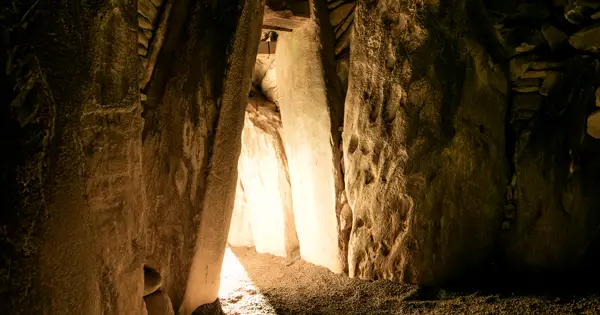
One of the most captivating aspects of ancient Irish art is the carvings found within passage tombs, particularly Newgrange. This massive circular mound, constructed from enormous stone blocks, features a long passage leading to a central chamber. During the winter solstice, a shaft of sunlight illuminates the inner chamber, highlighting the symbolic carvings that adorn the stones.
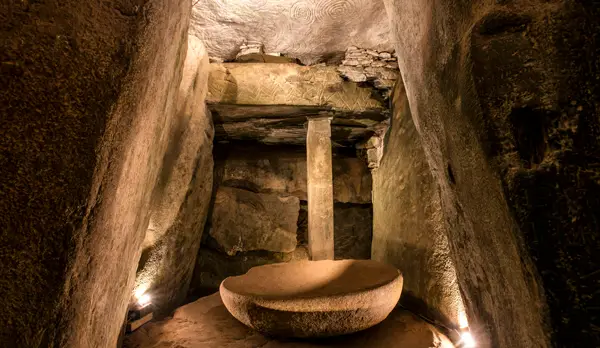
These carvings, consisting of spirals, circles, and other geometric patterns, have puzzled historians for generations. Some believe they hold astronomical significance, aligning with celestial events, while others see them as representations of ancient myths and beliefs. Whatever their true meaning, they are a testament to the creative and symbolic depth of the people who created them.
The tomb builders – Ireland’s ancient burial sites
In the many centuries following, art in Ireland has had numerous influences from around the world, including the Celts, Romans, Christians, Saxons and the Vikings, reflecting the colourful history of the Isle.
Celtic Art from a warrior race
The Celts were a warrior race who conquered most of Western and Central Europe from around 1000 BC to 1 AD. Much of their wealth was acquired through their conquests but they were also very skilled at metal works which they used to trade with distant lands.
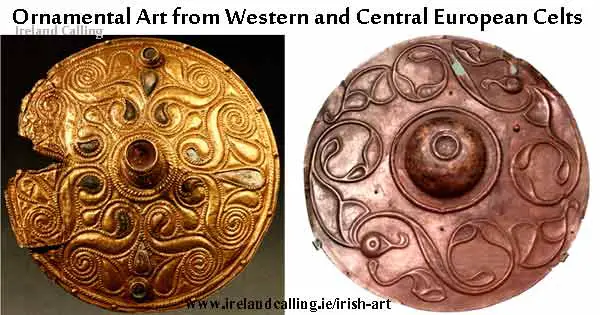
Celtic art has deep roots, spanning centuries and evolving through various periods. Its origins can be traced back to the Iron Age, around 500 BCE, with the emergence of the La Tène culture.
The Celtic style is perhaps the art we most associate with Ireland, where the Celts enjoyed a long, uninterrupted history spanning from the Iron Age up until the Roman Period in the first century AD.
During this time the Celts produced some beautiful ornamental art combining swirls and spirals intertwined with images of plant life. These were primarily used as decoration on jewellery, belt hooks, wine jugs, sculpture and weaponry.
Celtic art was not just aesthetically pleasing; it was deeply symbolic. Its designs often incorporated intricate knotwork, zoomorphic imagery (depictions of animals), and other intricate patterns. These symbols held spiritual significance, representing cycles of life, nature, and our connection to all things.
